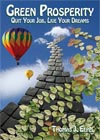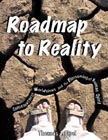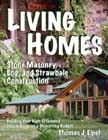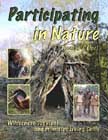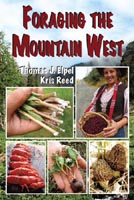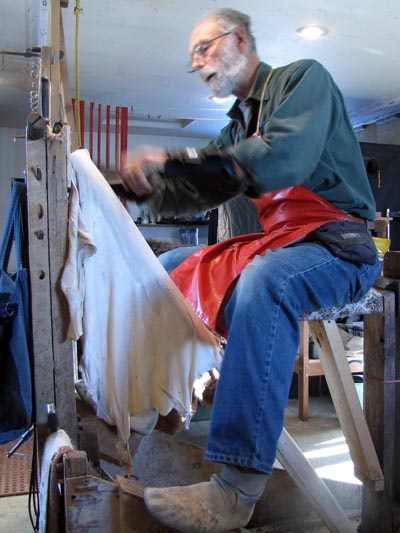
Tanning Spirit Notes and Updates
-Softening-
In the Tanning Spirit video I wrung moisture out of the hide and then refleshed the membrane side of the hide to remove liquid. My method has evolved since then. Now I prefer to keep the hide in the brain solution at 115F for a couple hours, then hand wring and rescrape the grain side prior to working the membrane side.
Fresh hides that have not had the ground substance removed will be very slick and nearly impossible to wring out. Each time the hide is put into a liquid brains or water the slimy "ground substance" transfers to the water. Regraining the hide will help force some of the ground substance out, making it less slippery.
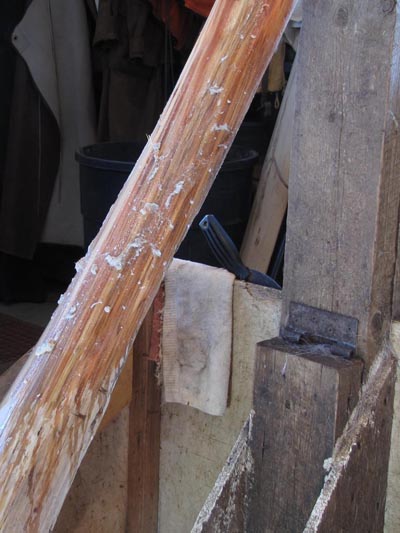 When regraining or membraning the hide, place it in the opposite direction from which the hair was removed. De-hairing and graining is usually done neck-to-tail. Rescrape it tail-to-neck to pull the fibers in the opposite direction. You will be surprised how much ground substance is removed this way.
When regraining or membraning the hide, place it in the opposite direction from which the hair was removed. De-hairing and graining is usually done neck-to-tail. Rescrape it tail-to-neck to pull the fibers in the opposite direction. You will be surprised how much ground substance is removed this way.
Next, wring the hide with a stick to remove moisture and additional ground substance. To wring out the hide, lay the hide on a blanket or table, flesh side up. Turn the sides inward 4 or 5 inches, then roll both sides to the center. Place the folded hide over or around a small pole or tight rope, form a loop, tucking both ends into the other, twisting each so the loop will lock together. Then take a short stout stick, about 18 inches long, place it into the loop, and begin winding the skin up very tightly. Secure the stick in that position to allow moisture inside to surface. Leave it tied a half-hour or so. Take a towel and wipe the moisture off and contue to do so while unwinding
The wrung out water is super slippery due to the ground substance, so don't bother re-using it. (This only applies to the tanners that don't use KOH).
Now you have a very wrinkled and shrunken hide that needs to be stretched over the beaming board until it is full size again. In this process, one will begin to see signs of the hide softening and whitening. Return the hide to the scraping beam and rescrape the membrane side. The hide is less dense on the flesh side so the brains will be pushed through the hide. Wring it out again, and use what every method you prefer to soften with.
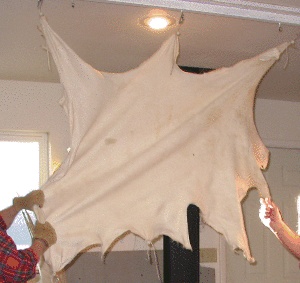 At this point, depending on how well you are set up for doing hides, you can break down the hide to a fine softness in several different ways: (1) continue working over the beamer, pulling and stretching until it is dry, (2) with a partner, pull the hide between you, rotating so the whole hide is stretched, (3) doing it
by yourself, standing on the edge of the hide pulling upward, then rotating it, etc., or seated, pulling over your knee, (4) pulling the hide around a heavy rope or cable tied from the ceiling to the floor, back and forth until the hide is soft and dry, (5) if your tanning area is set up for a more advanced production, you'll have hooks attached to the ceiling and loops attached to the skin. You can hang the hide up and stretch and pull it in all directions. Before actually working and pulling the hide, however, it is important to sew up (either by machine or by hand) any holes (at least the larger ones). If you don't do this, the hide will not soften properly around the holes and they can tear out.
At this point, depending on how well you are set up for doing hides, you can break down the hide to a fine softness in several different ways: (1) continue working over the beamer, pulling and stretching until it is dry, (2) with a partner, pull the hide between you, rotating so the whole hide is stretched, (3) doing it
by yourself, standing on the edge of the hide pulling upward, then rotating it, etc., or seated, pulling over your knee, (4) pulling the hide around a heavy rope or cable tied from the ceiling to the floor, back and forth until the hide is soft and dry, (5) if your tanning area is set up for a more advanced production, you'll have hooks attached to the ceiling and loops attached to the skin. You can hang the hide up and stretch and pull it in all directions. Before actually working and pulling the hide, however, it is important to sew up (either by machine or by hand) any holes (at least the larger ones). If you don't do this, the hide will not soften properly around the holes and they can tear out.
The basic idea at this point is the constant flexing of the hide on this basis, back and forth, and as the fibers dry, the gluten will not set up and harden, making a stiff hide. It is the lecithin in the brains that lubricates the fibers and allows them to move past each other and slide back and forth. When first doing hides you may get some hard spots. It takes experience and learning to "read" the nature of each hide to get better results from your efforts.
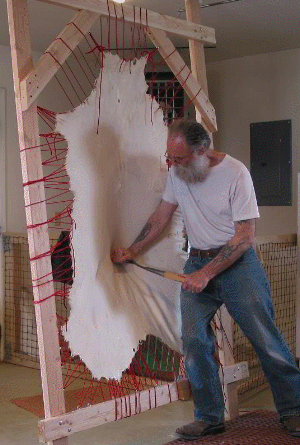 There are many things to look for at this stage of the game. For example, the temperature of the air is important. On a wet, drizzly day it will take longer to dry a hide. On the other hand, standing in the hot sun can dry a hide too quickly, so one must be able to control the work area, if possible. In winter, I like to work in front of a nice, comfortable wood stove with a small electric fan blowing air towards the hide (but be careful not dry it too fast). In summer, I like to work in the shade. One still must "read" the hide, even under the best circumstances. If the hide is drying too fast, a crust will form on it, so work it over the beaming board, then back and forth around the rope, then resume pulling and stretching. Scars are always a problem as they pucker up and won't stretch, so work those spots more over the beamer. Then there are puckers, wet spots, and dry areas -- all needing some kind of attention.
There are many things to look for at this stage of the game. For example, the temperature of the air is important. On a wet, drizzly day it will take longer to dry a hide. On the other hand, standing in the hot sun can dry a hide too quickly, so one must be able to control the work area, if possible. In winter, I like to work in front of a nice, comfortable wood stove with a small electric fan blowing air towards the hide (but be careful not dry it too fast). In summer, I like to work in the shade. One still must "read" the hide, even under the best circumstances. If the hide is drying too fast, a crust will form on it, so work it over the beaming board, then back and forth around the rope, then resume pulling and stretching. Scars are always a problem as they pucker up and won't stretch, so work those spots more over the beamer. Then there are puckers, wet spots, and dry areas -- all needing some kind of attention.
For lack of words and space to describe all these "little" happenings, one would be years ahead if they could apprentice under an experienced tanner!
If all goes right, 3 to 4 hours of softening should give you a soft, dry, white buckskin to be proud of, and then you can tend to your tired, sweaty body and blistered fingers.
New Notes on Softening
I no longer hand pull a hide for softening. Frame softening is easier on one's body. The extra time to lace the hide into the frame is well worth it. Depending on your abilities and knowledge of tanning, you can do more than one hide at a time. I find that doing two at a time is workable, plus this gives me time to take breaks.
Want to make your own buckskin clothing?
Learn to tan hides, sew buckskin, and design your own clothing!
Check out the Hunter-Gatherer Immersion Program at Green University® LLC.
Return to BraintanBuckskin.com Home Page
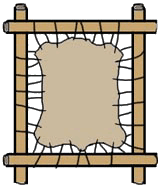



 BraintanBuckskin.com
BraintanBuckskin.com
 When regraining or membraning the hide, place it in the opposite direction from which the hair was removed. De-hairing and graining is usually done neck-to-tail. Rescrape it tail-to-neck to pull the fibers in the opposite direction. You will be surprised how much ground substance is removed this way.
When regraining or membraning the hide, place it in the opposite direction from which the hair was removed. De-hairing and graining is usually done neck-to-tail. Rescrape it tail-to-neck to pull the fibers in the opposite direction. You will be surprised how much ground substance is removed this way.  At this point, depending on how well you are set up for doing hides, you can break down the hide to a fine softness in several different ways: (1) continue working over the beamer, pulling and stretching until it is dry, (2) with a partner, pull the hide between you, rotating so the whole hide is stretched, (3) doing it
by yourself, standing on the edge of the hide pulling upward, then rotating it, etc., or seated, pulling over your knee, (4) pulling the hide around a heavy rope or cable tied from the ceiling to the floor, back and forth until the hide is soft and dry, (5) if your tanning area is set up for a more advanced production, you'll have hooks attached to the ceiling and loops attached to the skin. You can hang the hide up and stretch and pull it in all directions. Before actually working and pulling the hide, however, it is important to sew up (either by machine or by hand) any holes (at least the larger ones). If you don't do this, the hide will not soften properly around the holes and they can tear out.
At this point, depending on how well you are set up for doing hides, you can break down the hide to a fine softness in several different ways: (1) continue working over the beamer, pulling and stretching until it is dry, (2) with a partner, pull the hide between you, rotating so the whole hide is stretched, (3) doing it
by yourself, standing on the edge of the hide pulling upward, then rotating it, etc., or seated, pulling over your knee, (4) pulling the hide around a heavy rope or cable tied from the ceiling to the floor, back and forth until the hide is soft and dry, (5) if your tanning area is set up for a more advanced production, you'll have hooks attached to the ceiling and loops attached to the skin. You can hang the hide up and stretch and pull it in all directions. Before actually working and pulling the hide, however, it is important to sew up (either by machine or by hand) any holes (at least the larger ones). If you don't do this, the hide will not soften properly around the holes and they can tear out. There are many things to look for at this stage of the game. For example, the temperature of the air is important. On a wet, drizzly day it will take longer to dry a hide. On the other hand, standing in the hot sun can dry a hide too quickly, so one must be able to control the work area, if possible. In winter, I like to work in front of a nice, comfortable wood stove with a small electric fan blowing air towards the hide (but be careful not dry it too fast). In summer, I like to work in the shade. One still must "read" the hide, even under the best circumstances. If the hide is drying too fast, a crust will form on it, so work it over the beaming board, then back and forth around the rope, then resume pulling and stretching. Scars are always a problem as they pucker up and won't stretch, so work those spots more over the beamer. Then there are puckers, wet spots, and dry areas -- all needing some kind of attention.
There are many things to look for at this stage of the game. For example, the temperature of the air is important. On a wet, drizzly day it will take longer to dry a hide. On the other hand, standing in the hot sun can dry a hide too quickly, so one must be able to control the work area, if possible. In winter, I like to work in front of a nice, comfortable wood stove with a small electric fan blowing air towards the hide (but be careful not dry it too fast). In summer, I like to work in the shade. One still must "read" the hide, even under the best circumstances. If the hide is drying too fast, a crust will form on it, so work it over the beaming board, then back and forth around the rope, then resume pulling and stretching. Scars are always a problem as they pucker up and won't stretch, so work those spots more over the beamer. Then there are puckers, wet spots, and dry areas -- all needing some kind of attention.